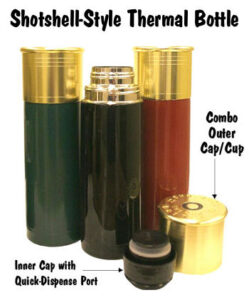How your rifle stock conforms to your body can make or break everything downrange. Cornus du Plooy was my PH. I pulled the trigger, heard the bullet impact, and saw the bull fall after the recoil. Cornus said, “It’s an excellent rifle, that.” Cornus was right. The Heym Express by Martini rifle was stocked perfectly for me. Ralf Martini, a well-known gunsmith, designed the Express’ stock. It’s one of my favorite stock designs. After my first encounter with the.404 Jeffery, it was clear that I was not well-versed in the effects of stock fit. There are many good features in all designs, but equally many flaws. I have my own favorites and some that I don’t like. Or maybe they don’t fit me well. I began a conversation with people who are familiar with stock design to get their opinions. HeymUSA president Chris Sells is passionate about vintage-style bolt-action guns and double rifles. He also embraces modern actions such as his straight-pull. Mark Bansner, the founder of Bansner & Company LLC is a custom rifle manufacturer. He’s equally famous for his rifles and his synthetic stocks. Zack Buck from Blak Forge Armoury was also a guest. Zack Buck of Blak Forge Armoury is passionate about vintage stock designs, including traditional muzzleloaders. He is also well-versed with making replacement stocks for vintage firearms. We’ve seen a shift in sighting systems over the past century. The telescopic sight plays a larger role. The combs of modern stocks, both synthetic and walnut, have not changed. I have been to the SAAM Shooting School at FTW Ranch in Barksdale Texas several times. There, highly skilled instructors push you to do your best. To better align the shooter’s eye with their optic, and to give proper cheek weld, they add a cheek pad almost to every rifle they handle. Evidently, I’m not the only one who feels that the average comb is too small. Mark Bansner with one of his custom-made synthetic rifles in.404 Jeffrey. Bansner Custom rifles enjoy a great reputation. Bansner stated that most rifles today have a comb too low to be properly scoped. “Cheek weld allows for you to place your face on a stock at the same spot with the same pressure to use a scope effectively. To achieve this cheek weld, make sure to keep your comb as high up as possible when building a stock out of wood or synthetic. One problem is that bolts can hit the stock when the bolt is being cycled on long-action bolt rifles and some shorts. Some tactical stocks today make the comb high and cut a hole in the nose to allow bolt removal and clearance. It looks terrible on an English walnut stock, but it is fine for a tactical gun. To address this problem, many people are adding a laced-on comb height pad for sporting stocks. Buck is also aware that I shape my combs to the height of the rifle’s primary purpose. Scoped rifles require higher combs. I try to keep my scope as low as possible. This allows for a lower comb and, I believe, a better aesthetic and gentler perceived recoil. Buck said that Factory Monte Carlo-style, combs are an easy solution for a ‘one size fits all’ problem. Buck said that the forward-slanting line of combs allows for cheek welds with a variety scope heights and shooting styles. Recently, there has been a rise in the use of larger scopes in magnification as well as in tube diameter. This makes the center of the scope larger, often higher than what a stock was intended for. The comb height of a customer fitting them for a new rifle stock will differ if they select a 3-9x in an inch tube or a 34mm tube. The 34mm tube has a comb height that is almost 5/32 inches higher. “Combs and Hard IronsWhile it is important to have your comb at the right height for an optic if you only use optics, what about rifles that use both scopes or iron sights? I am referring to big-bore rifles that are used for dangerous game hunting. The scope might need to be removed in order for close-quarter follow up work. The only option is to stock the rifle with the lower iron sights and compensate the scope. HeymUSA’s Sells stated that the Weatherby stock’s high comb is “probably the best at aligning the shooter’s eyes with the scope, but it limits the rifle’s use to scopes only.” This is not an option for dangerous game rifles. They must be stored in a way that allows them to function with open sights. However, most shooters prefer to use a scope whenever possible. There is always a balance to be struck when trying to accommodate both. A dangerous game rifle with no scope and open sights is only half the rifle. “A proper cheek weld is key to reducing felt residuum. The three men agreed that a poor cheek weld can cause that horrible slap in your face, especially if you are looking at the bench. Proper alignment of the head can reduce perceived recoil, especially from the bench. A longer stock is more comfortable for me as I am just 6’4” tall and have long arms. A 14-inch LOP is my preference if I am wearing a heavier hunting jacket. I prefer 14 3/8 inches in a shirt and a little longer in a double rifle. Buck said that Buck believes this is due to mass-producing guns that “sort of” fit everyone. It’s easier to reach for a long gun when you’re too short than to reach for a shorter gun. Another reason is shooting style. I find it interesting that Americans tend to keep their rifles closer to their chests than Europeans. I suspect that Americans have a habit of shooting from a seated or even off a rail, which has helped to reduce the feeling of being too short from LOPs with shorter LOPs. “Rigby’s Highland Stalker is a beautiful design that pays homage to the early 20th-century Rigby rifles. Bansner said that length of pull is a difficult measurement. “Some old methods of measuring are not reliable. There are many different lengths of arms. This measurement takes into account height, weight, and arm length. Shotguns have a longer pull length than rifles. Your rear sight is your eye for most shotgunning. Bansner said that the average LOP for rifles made in the United States is 13 1/2 inches and for shotguns it is 14 inches. “European makers extend the LOP 1/2 to 3/4 inch on most long-guns they make. A try stock is the best way to fit a stock for a client. These can be adjusted in any way you like and are sometimes shootable. When mounting a long gun quickly in a hunting environment, the LOP is crucial. Too long and the gun will hang up on clothing. Proper eye relief is essential when using a scoped rifle. This will prevent the scope from slicing your head open. Bansner said, “I have a formula that I use for scoped guns.” A shooter who is 5′ 9″ tall and 180 pounds should measure 13 1/2 inches with their LOP. For every inch of height, subtract or add 1/8 inch. This works well for people of average weight. You will need to adjust for heavier people, making it shorter. “Sells uses a similar method, realizing the importance of having a properly-lengthened stock. Sells uses a similar formula to deal with hard-kicking rifles. He keeps the shooter’s thumb away of his nose. Selling measures his clients like a tailor and the Heym formula works. I asked them which popular rifle stock designs they liked the most. The Winchester Model 70 is a classic design and is probably the most appealing. Bansner also liked the Ruger M77. Zack Buck with one his custom walnut stocacks. We also discussed the recent trend to keep the trigger-hand thumb on either side of the rifle. Although I don’t like the technique, I do recognize that it has its place. I have seen stock designs that make the nose of a comb in a way that prevents traditional grips, such as the Nosler M48. I asked for your thoughts and opinions. Buck said that he believes there are several reasons for this trend. It’s first, it comes from the military. One of the ways we helped soldiers avoid pulling their shot was to keep their trigger-hand thumb on their grip. We also used this technique to help them not hold onto the rifle with their trigger hands when teaching Basic Rifle Marksmanship. This has nothing to do with traditional hunting rifles but it could be a transitioning from one platform to the next. Buck stated that he is not in favor of shooting hunting rifles like a long-range bench gun, sniper rifle or rifle designed to be fired primarily out of the prone for varmints. “I believe there’s also an emphasis on conservation of movement. Wrapping the thumb back over a stock after activating the safety is an unnecessary energy expenditure’ according to that philosophy. A second reason is the excessive thickness of many mass-produced stocks. This can make it difficult to wrap your thumb around. When fitting a rifle stock, I make sure that your thumb is comfortable when it’s crossed over. While I make custom stocks, they are made to fit the customer’s needs. I make sure that the thumb can cross over and that the cheek and head are in the correct position. Bansner has a different opinion than mine about the right-side thumb grip. Bansner said, “I have been using this style for years and for good reasons.” There are many ways to hold a gun when shooting, and each has a significant effect on its performance. The death grip will transmit every heartbeat and breath into your rifle. Your pulse will be reduced by keeping your thumb on the trigger-finger’s side. This will also allow you to relax your trigger finger. This is the preferred method for shooting from a bench to ensure accuracy: three fingers on the pistol grip, pressure to your rear into your shoulder, and the thumb on your trigger finger side. Bansner designed his comb to be used with optics. This means that you will need to press down to see the iron sights. However, I will respect my position when it comes time to use the heavier cartridges. Sells felt the same way. “On a heavy-kicking rifle, a firm grip is essential. Although it might seem trendy for small bores, I can assure that no one shoots a.375 H&H without a strong grip. “Wood vs. Not Wood” I also brought up the classic wood-versus-synthetic argument with surprising results. Sells is open to both materials, each with its own purpose, but embraces walnut for classic-style bolt-actions or double rifles. Buck is a straight-up wood traditionist: “Wood. It’s that simple. Surprisingly Bansner, a man known for his outstanding synthetic stocks, is also a secret fan. Bansner stated that walnut and custom stock-making are what sparked my interest in gunsmithing. “Wood has soul,” Bansner said. This is evident when you consider the other materials stocks are made from. It takes a lot of talent to make a walnut stock out of a blank piece of wood. It will take well over 100 hours to complete, from layout to final checking. Wood is my favorite material. The Nosler stock was designed to allow the shooter to place their thumb on the right-hand side of the stock and grip the stock rearward with their lower three fingers. “So, now you might be asking why synthetic rifles are so popular? continued Bansner. “I love what my job is, but you have to make enough money to survive. Otherwise you won’t last long in business. In the late ’70s and early ’80s, synthetic stocks were becoming more popular. Fiberglass was the first material that was used to make rifle stocks. Why? Number one was their weight. Then, because it was impervious in all weather conditions. They were also known for being ugly. I changed that perception and built them with the exact same attention to detail as my wood stocks. A super high-quality synthetic rifle was made with excellent fit and finish. Oh, and I could make five to six of these rifles in the same time as it took to build one wood-stocked rifle. These three men have a lot of insight and wisdom that makes it clear why a stock should be properly-fitted. Both Sells and Bansner have made custom stocks for me and they are my favorite guns. There are many factory rifles that can be tailored to fit your frame, the Savage AccuStock being one of my favorites. However, it is worth measuring your body properly before you purchase a stock. One well-fitting stock can make all the difference in your shooting experience. Download your Storm Tactical printable target pack 62 printable MOA targets with DOT drills – Rifle range in YARDS. This amazing target pack is from Storm Tactical and includes 62 printable targets for rifle or handgun range use. Target grids and bullseye sizes can be found in MOA. Perfect for long-range shooting! Get free targets

Offers of the Week on DealFinder 508: AccurateShooter
June 16th, 2025BargainFinder 508: AccurateShooter’s Talks of the WeekAt the demand of our readers, we offer a few” Talks of the Week” options. Our Best Discount choices are available every
















